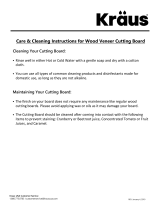
Tool Use
DON'T FORCE TOOL
It will do the job better and safer at the rate for which it was
designed.
USE THE RIGHT TOOL
Don't force a small tool or attachment to do the job of a
heavy duty tool. Don't used tool for purpose not intend-
ed-for example, don't use a circular saw for cutting tree
limbs or logs.
SECURE WORK
Use clamps or a vise to hold work when practical. It's safer
than using your hand and it frees both hands to operate
the tool.
NEVER LEAVE TOOL RUNNING UNATTENDED
Turn power off. Don't leave tool until it comes to a com-
plete stop.
Tool Care
DO NOT ALTER OR MISUSE TOOL
These tools are precision built. Any alteration or modifica-
tion not specified is misuse and may result in dangerous
conditions.
AVOID GASEOUS AREAS
Do not operate electric tools in a gaseous or explosive
atmosphere. Motors in these tools normally spark, and
may result in a dangerous condition.
MAiNTAiN TOOLS WiTH CARE
Keep tools sharp and clean for better and safer perfor-
mance. Follow instructions for lubricating and changing
accessories. Inspect tool cords periodically and if dam-
aged, have repaired by authorized service facility. Inspect
extension cords periodically and replace if damaged. Keep
handles dry, clean and free from oil and grease.
Before connecting the tool to a power
(receptacle, outlet, etc.), be sure
voltage supplied is the same as that specified on the name-
plate of the tool. A power source with a voltage greater than
that specified for the tool can result in serious injury to the
user, as well as damage to the tool. If in doubt, DO NOT
PLUG IN THE TOOL. Using a power source with a voltage
less than the nameplate rating is harmful to the motor.
For your own safety, do not operate your
Scroll Saw until it is completely assembled
and installed according to the instructions...and until you
have read and understood the following:
1. General Safety Rules .............................................. 2=4
2. Motor Specifications and Electrical ..........................
Requirements ............................................................ 5
3. Getting to Know Your Scroll Saw ........................ 8-9
4. Operating Adjustments .......................................... 10
5. Basic Scroll Saw Operations ............................ 11=14
6. Mounting the Scroll Saw .................................... 15-16
7. Maintaining Your Scroll Saw .................................. 17
8. STABILITY OF SAW
Your Scroll Saw must be bolted securely to a stand or
workbench. In addition, if there is any tendency for the
Scroll Saw to tip over or move during certain operations,
such as cutting long, heavy boards, bolt your Scroll Saw
stand or workbench to the floor.
9. LOCATION
This Scroll Saw is intended for indoor use only.
10. PROTECTION: Eyes, hands, face, ears and body.
TO AVOID BEING PULLED INTO THE
BLADE--
DO NOT WEAR:
Loose Fitting Gloves
Necktie
Loose Clothing
Jewelry
DO: TiE BACK LONG HAiR
ROLL LONG SLEEVES ABOVE ELBOWS
a. If any part of your saw is missing, malfunctioning, has
been damaged or broken.., such as the motor switch, or
other operating control, a safety device or the power
cord...cease operating immediately until the particular part
is properly repaired or replaced.
b. Do not cut piece too small to hold by hand.
HINT: When making a very small cut out, always secure
the workpiece to a scrap piece of plywood with double-
faced tape. This way, the work is supported and your fin-
gers are away from the blade.
c. Never turn your Scroll Saw on before clearing the table
of all objects (tools, scraps of wood, etc.) except for the
workpiece and related feed or support devices for the
operation planned.
m




















